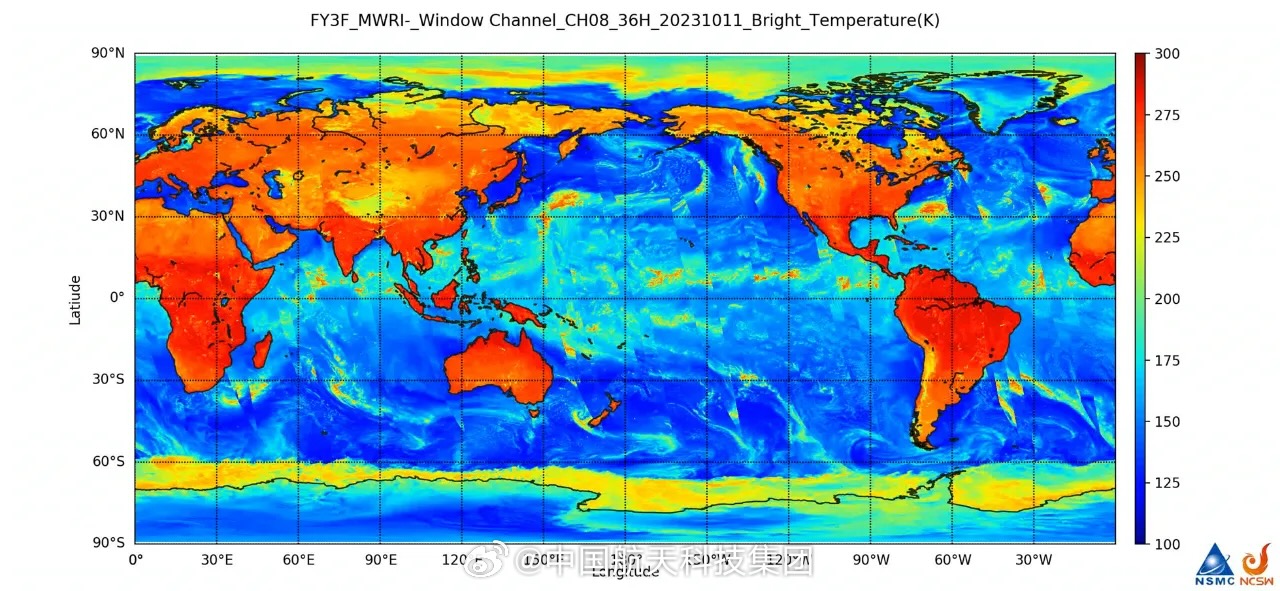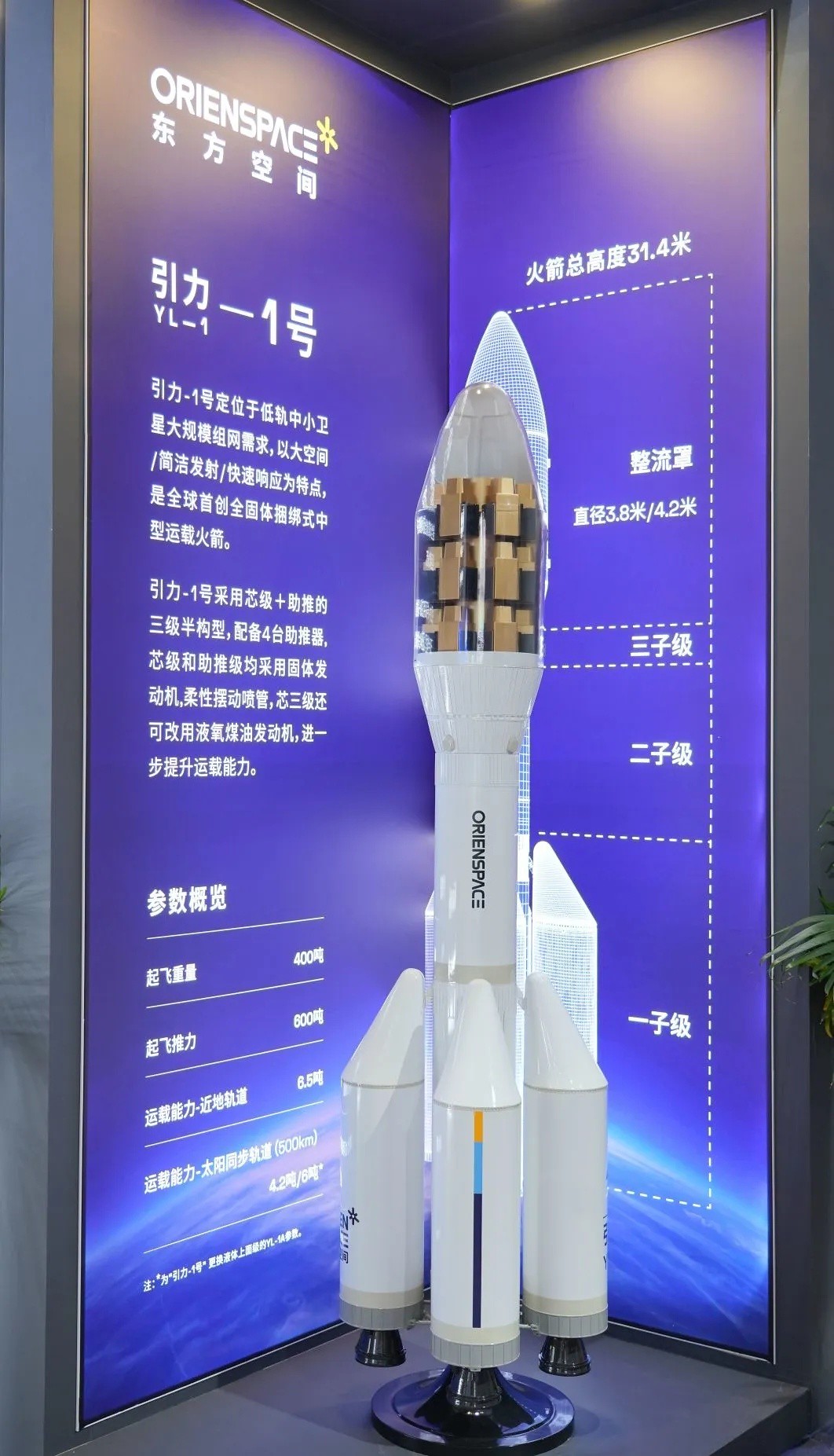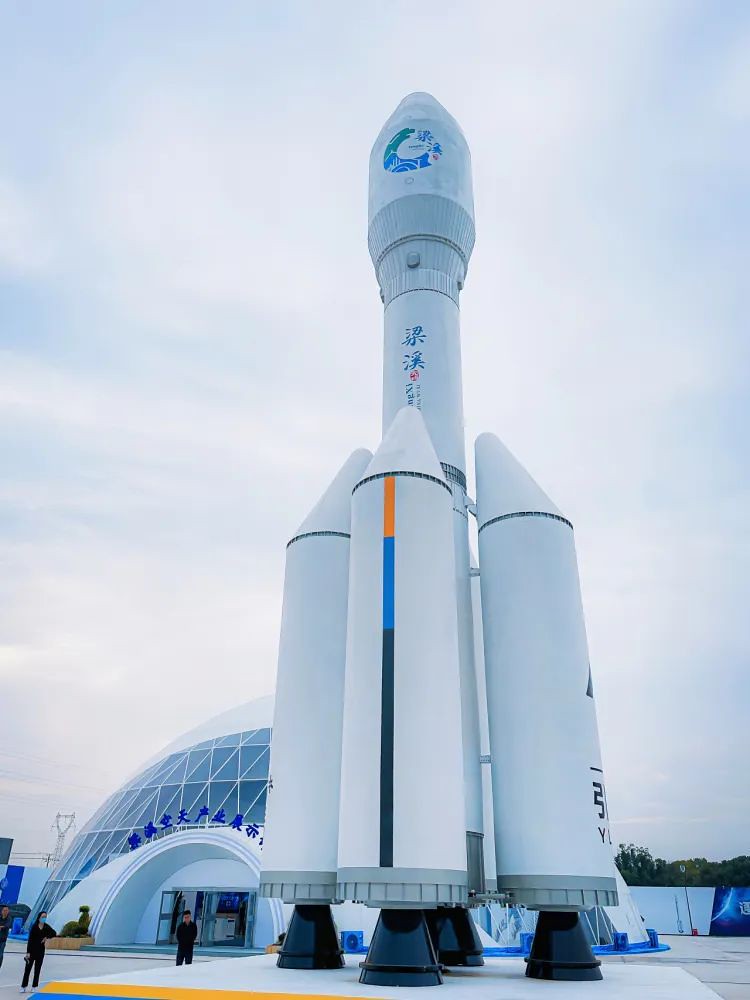You are using an out of date browser. It may not display this or other websites correctly.
You should upgrade or use an alternative browser.
You should upgrade or use an alternative browser.
China's Space Program Thread II
- Thread starter Blitzo
- Start date
by78
General
(Continued from above... )
Fengyun-3 06 (FY-3-06) is a meterological satellite that will replace Fengyun-3 03, which is set to retire after 10 years of service. FY-3-06 carries 10 different onboard instruments, including a new ultraviolet hyperspectral imager for ozone monitoring.


First set of global images sent back by Fengyun-3 06 (FY-3-06) that was launched back on August 3rd. All systems are operating normally. The 2nd image was taken by the onboard microwave imager, and the 3rd image was taken by the ultraviolet hyperspectral imager used for ozone monitoring.



escobar
Brigadier
With the latest TLE data, it is confirmed Yaogan-40 is the third gen (1st Gen= YG-9ABC/16ABC/17ABC/20ABC/25ABC; 2nd Gen: YG-31 Group 1 to 4) Naval Ocean Surveillance System using tree satellites operating in a triangular formation separated from each other by about 120 km. 9 and 31 are in similar orbits, of around 1,100 by 1,050 km inclined by 63.4° but 40 at 851 by 854, 63.4° inclined, giving it a global view instead of just SCS & TW strait. 40 sats also bigger than the others, as launched by CZ-7A instead of LM-4C. As for 9&31, I'am expecting SSF to launch a new serie of optical sats (maybe also with a serie of SAR sats) to trail each 40 triplet for target confirmation.Three spacecraft of the first group “Yaogan-40” were launched into a subpolar orbit with an inclination of 86°, which until now has hardly been used in China. In the late 1990s, American Iridium satellites were launched by Chinese carriers into orbits with an inclination of 86.4°, and recently, in 2021–2023, inclinations of 86.0° and 86.4° were used by China to launch experimental low-orbit communications satellites. It is worth clarifying that the orbit chosen for the YG-40 provides an almost global view. The main subject of interest now is the upcoming construction of this new constellation. Are they planned to work in a close group, like the Chinese NOSS family of systems, or will they be distributed along the orbit like the Yaogang-30?
NOSS give the ability not only to track warships on the open ocean, but also to directly target ships with weapons. I'am pretty sure SSF/PLAN also have adopted the “sensor-to-shooter” approach like USN has done decades ago. Instead of the NOSS satellites data being sent to the SSF/PLAN HQ and then to the ships, the information would be made automatically available to the weapons control stations in ships, subs, and aircraft; PLAN ships and aircraft exchanging tactical data in near realtime. This approach meant that more data could be delivered in useable form. This concept required that the satellite systems collect, process, and automatically report the information. I believe this is one of the key space system allowing PLAN anti-ship missiles to reach beyond the sensor range of their launching ships. And as PLA is shifting from a regional system to a global system, it means the era of anti-ship missile strike beyond 2IC is coming.
Note that, SSF also operate YG-32 (only 2 group launched) another NOS System using 2 sats instead of 3 in each group. Current US latest gen of NOSS (called Intruder) also used 2 sats for radar emissions triangulation.
Last edited:
escobar
Brigadier
Since 2020, SSF has been testing an experimental GEO on-orbit jamming system. I suspect this EW payload is deployed either with SJ-17, SJ-20 or TJS-3.
Depending on the location and power capacity of the jammer, it could interfere most easily with other nearby communications satellites, or those at lower orbits.
Last edited:
by78
General
For those interested, here's the . Below is a Nature article on this development.

Researchers in China have developed a robot chemist powered by artificial intelligence (AI) that might be able to extract oxygen from water on Mars. The robot uses materials found on the red planet to produce catalysts that break down water, releasing oxygen. The idea could complement existing oxygen-generating technologies or lead to the development of other catalysts able to synthesize useful resources on Mars.
“If you think about the challenge of going to Mars, you have to work with local materials,” says Andy Cooper, a chemist at the University of Liverpool, UK. “So I can see the logic behind it.”
The study, published in Nature Synthesis1, was led by Jun Jiang at the University of Science and Technology of China in Hefei. Jiang and his team used a mobile machine the size of a refrigerator with a robotic arm to analyse five meteorites that had either come from Mars or been collected on Earth but mimicked the Martian surface. The team’s goal was to investigate whether the machine could produce useful catalysts from the material.
The AI-powered system used acid and alkali to dissolve and separate the material, then analysed the resulting compounds. These then formed the basis of a search of more than 3.7 million formulae for a chemical that could break down water — known to exist as ice at Mars’ poles and under the planet’s surface — a process the team said would have taken a human researcher 2,000 years. The result was an oxygen-evolution reaction catalyst that could release oxygen from water, with the potential for use on a future Mars mission.
“We have developed a robotic AI system that has a chemistry brain,” says Jiang. “We think our machine can make use of compounds in Martian ores without human guidance.”
However, Michael Hecht at the Massachusetts Institute of Technology’s Haystack Observatory in Westford says that there is a much easier way to produce oxygen on Mars. He is the lead investigator on the Mars Oxygen In-Situ Resource Utilization Experiment () on board NASA’s Perseverance rover, which touched down on Mars in February 2021, and has successfully demonstrated the production of oxygen from the Martian air, which is mostly carbon dioxide.
MOXIE has only been used to produce a few grams of oxygen at a time, owing to the modest power output of Perseverance. But in future, a scaled-up version of MOXIE could be used to produce more than enough oxygen for a human settlement. MOXIE could also produce a sufficient quantity of the gas to serve as the oxidizer for rocket fuel to launch a craft for a return trip to Earth. “You can produce two to three kilograms an hour,” says Hecht. “There’s zero obstacle to scaling this up.”
Jiang points out that his group’s robotic chemist could also be used to produce other useful catalysts on Mars, for processes such as fertilizing plants. “Different chemicals can be made by this robot,” he says. And Mars isn’t the only place where it could have uses. “Maybe lunar soil is another direction,” Jiang says.
Using AI to synthesize useful materials in this way is a novel area of research, says Cooper, that has applications beyond space travel. “It’s an emerging method of using AI that’s more broadly applicable to all kinds of chemistry, not just to catalysis and oxygen production,” he says.
The system uses Martian materials to produce catalysts that release oxygen from water.
13 November 2023
Researchers in China have developed a robot chemist powered by artificial intelligence (AI) that might be able to extract oxygen from water on Mars. The robot uses materials found on the red planet to produce catalysts that break down water, releasing oxygen. The idea could complement existing oxygen-generating technologies or lead to the development of other catalysts able to synthesize useful resources on Mars.
“If you think about the challenge of going to Mars, you have to work with local materials,” says Andy Cooper, a chemist at the University of Liverpool, UK. “So I can see the logic behind it.”
The study, published in Nature Synthesis1, was led by Jun Jiang at the University of Science and Technology of China in Hefei. Jiang and his team used a mobile machine the size of a refrigerator with a robotic arm to analyse five meteorites that had either come from Mars or been collected on Earth but mimicked the Martian surface. The team’s goal was to investigate whether the machine could produce useful catalysts from the material.
The AI-powered system used acid and alkali to dissolve and separate the material, then analysed the resulting compounds. These then formed the basis of a search of more than 3.7 million formulae for a chemical that could break down water — known to exist as ice at Mars’ poles and under the planet’s surface — a process the team said would have taken a human researcher 2,000 years. The result was an oxygen-evolution reaction catalyst that could release oxygen from water, with the potential for use on a future Mars mission.
“We have developed a robotic AI system that has a chemistry brain,” says Jiang. “We think our machine can make use of compounds in Martian ores without human guidance.”
Catalytic creator
If a catalyst that can produce oxygen from water can be made on Mars, this would remove the need for missions to carry such a catalyst from Earth. Jiang says that for every square metre of Martian material, his group’s system could make nearly 60 grams of oxygen per hour, potentially removing the need for astronauts on future missions to the planet to carry oxygen from Earth to use when they get there. “The robot can work continuously for years,” says Jiang.However, Michael Hecht at the Massachusetts Institute of Technology’s Haystack Observatory in Westford says that there is a much easier way to produce oxygen on Mars. He is the lead investigator on the Mars Oxygen In-Situ Resource Utilization Experiment () on board NASA’s Perseverance rover, which touched down on Mars in February 2021, and has successfully demonstrated the production of oxygen from the Martian air, which is mostly carbon dioxide.
MOXIE has only been used to produce a few grams of oxygen at a time, owing to the modest power output of Perseverance. But in future, a scaled-up version of MOXIE could be used to produce more than enough oxygen for a human settlement. MOXIE could also produce a sufficient quantity of the gas to serve as the oxidizer for rocket fuel to launch a craft for a return trip to Earth. “You can produce two to three kilograms an hour,” says Hecht. “There’s zero obstacle to scaling this up.”
Jiang points out that his group’s robotic chemist could also be used to produce other useful catalysts on Mars, for processes such as fertilizing plants. “Different chemicals can be made by this robot,” he says. And Mars isn’t the only place where it could have uses. “Maybe lunar soil is another direction,” Jiang says.
Using AI to synthesize useful materials in this way is a novel area of research, says Cooper, that has applications beyond space travel. “It’s an emerging method of using AI that’s more broadly applicable to all kinds of chemistry, not just to catalysis and oxygen production,” he says.
by78
General
OrienSpace Gravity-1's maiden launch has been confirmed for December. The launch will take place at the Oriental Spaceport in Yantai.

A full-size mock up of OrienSpace's Gravity-1 rocket. Maiden flight is scheduled for next month.

escobar
Brigadier
HY-3A launched, a new generation of ocean water color observation satellite. It is the world’s first high-precision ocean water color observation satellite targeting various water bodies around the world and using multiple detection methods.


